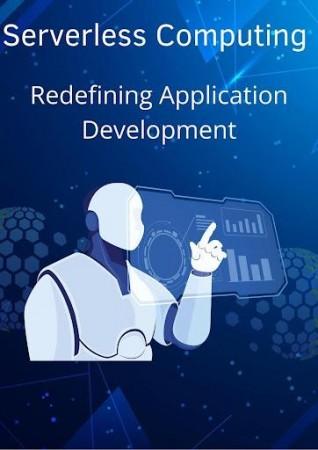
In this era of rapid technological evolution, serverless computing is transforming how applications are developed, deployed, and managed in the cloud. Karthik Akinepalli, a cloud technology expert, explores its innovative features and real-world applications, demonstrating its potential to revolutionize industries and reshape the digital landscape with unprecedented efficiency.
Moving Beyond Traditional Models
Serverless computing revolutionizes cloud development by removing infrastructure management, allowing developers to focus solely on coding. This shift streamlines processes, enhances scalability, and transforms traditional cloud models into more efficient and developer-centric solutions.
Key features of serverless computing include:
- Event-Driven Execution: Functions are triggered by specific events, enhancing responsiveness and efficiency.
- Automatic Scaling: Resources scale dynamically based on demand, ensuring seamless performance.
- Pay-Per-Use Pricing: Users pay only for resources consumed during execution, reducing costs.
- Stateless Functions: Each function operates independently, improving scalability and fault tolerance.
Empowering Developers with Efficiency
The serverless approach dramatically enhances developer productivity by removing the complexities of infrastructure management. Developers can leverage a polyglot environment, working with multiple programming languages tailored to specific tasks. This flexibility empowers teams to innovate faster, driving accelerated development cycles and quicker time-to-market for new features.
Surveys reveal significant benefits:
- 81% of developers report increased productivity due to the modular and isolated nature of serverless functions.
- Organizations adopting serverless architectures achieve faster feature deployment and enhanced operational agility.
Cost-Efficiency as a Driving Force
Serverless computing introduces a granular pricing model that aligns costs directly with resource usage. This model is particularly advantageous for applications with variable workloads. For instance:
- Serverless platforms offer free tiers, such as 1 million free requests per month, allowing small applications to operate cost-effectively.
- Studies indicate potential savings of up to 77% compared to traditional deployments, making it a compelling choice for businesses prioritizing financial efficiency.
Enhanced Scalability for Dynamic Workloads
One of the most transformative aspects of serverless computing is its unparalleled scalability. With automatic scaling capabilities, serverless platforms adjust to workload demands in real time, ensuring optimal performance during traffic spikes.
For example:
- Popular platforms handle billions of function executions monthly, highlighting their capacity to support high-demand applications.
- Default configurations often allow 1,000 concurrent executions, catering to diverse operational needs.
Advancing Security Postures
Security is inherently strengthened in serverless architectures. Automatic updates from cloud providers ensure the latest security patches are applied, reducing vulnerabilities. Additionally, the ephemeral nature of serverless functions minimizes exposure to potential threats, as functions exist only during execution.
Organizations adopting serverless architectures have reported improved security outcomes, underlining its suitability for sensitive and compliance-driven industries.
Real-World Applications
Serverless computing is not confined to theoretical advantages; its impact spans various domains, transforming how businesses approach application development:
- API Development: Building scalable and efficient APIs without managing infrastructure.
- Real-Time Data Processing: Managing high-volume data streams from IoT devices and social media.
- Batch Processing: Automating repetitive tasks like data backups and report generation.
- Machine Learning Workloads: Scaling model training and inference operations seamlessly.
- Event-Driven Applications: Supporting use cases triggered by diverse events, such as database changes and file uploads.
These applications illustrate the versatility and adaptability of serverless computing in addressing modern business challenges.
The Road Ahead
As serverless technology continues to evolve, its adoption is expected to accelerate across diverse industries. By minimizing operational overhead, enhancing cost efficiency, and offering unparalleled scalability, serverless aligns perfectly with the demands of organizations seeking agility and innovation. Emerging advancements will likely expand its capabilities, cementing serverless computing as a cornerstone in the future of cloud application development.
In conclusion, Karthik Akinepalli highlights serverless computing as a transformative paradigm that redefines cloud resource utilization. By empowering developers and organizations, it fosters innovation and efficiency, driving significant advancements in the ever-evolving digital landscape.







![Sky is the limit: IndiGo is now tenth largest airline by capacity globally; growth indisputable [details]](https://data1.ibtimes.co.in/en/full/767455/sky-limit-indigo-now-tenth-largest-airline-by-capacity-globally-growth-indisputable-details.jpg?w=220&h=138)









